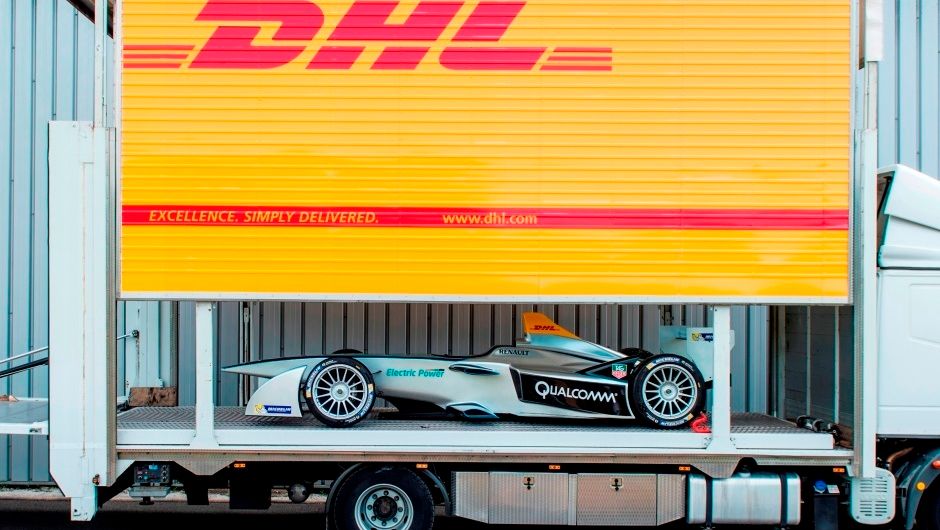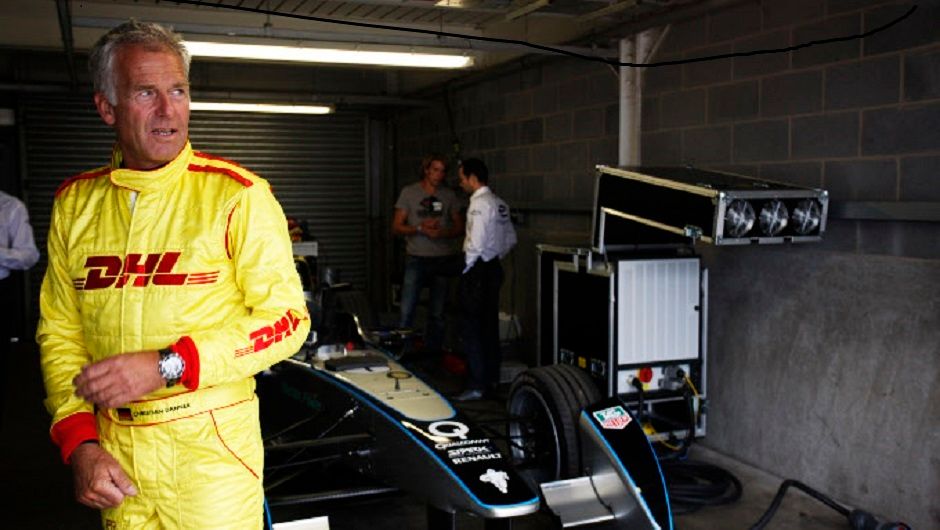Formula E
Formula E: Inspiring the Future of Transport
By Ken Allen, CEO DHL Express
Around two years ago, Formula E was nothing but an idea. Looking at the world’s first fully-electric racing championship today, it is amazing to see how that idea has transformed into reality.
To create a new global sporting championship that will appeal to new generations of spectators is in itself hard enough. To do it in an area – motor racing – that already has a number of established championships, each with a dedicated hardcore following, is even harder. To do it on the back of new, untested technologies and to throw in a commitment to minimize the carbon emissions generated throughout the world? Well, some might call that madness. At the very least it takes guts, and vision.
What’s so inspiring about Formula E is that it will drive technological improvements, push the performance and endurance limits of batteries further, make electric vehicles more commercially appealing and encourage cities to embrace e-mobility.
It was this vision (or perhaps even the madness) that DHL bought into when we signed up as a founding partner of Formula E in 2013. As a company that was also built on the ‘crazy idea’ of three entrepreneurs and which went truly global thanks to a pioneering approach to opening new markets, we saw a lot of parallels between what Alejandro Agag and his team wanted to achieve and our own business and culture. And we’ve not been disappointed. What’s more, we’re incredibly excited about where this vision will take us next. We’ve all seen the development of the high performance Spark-Renault srt_01E race car. We’ve participated interactively through Fanboost. We’ve heard the futuristic whoosh of the car. And we’ll see the introduction of wireless charging, for the safety car in season one and potentially the race cars in year two. With all this achieved within such a short space of time, who knows what further developments we’ll see, particularly when the racing teams are given more freedom to fine-tune the cars from season two onwards.
There’s nothing basic about the basics
The logistics business is not widely recognized for innovation. The last major innovation that changed the face of the industry took place in 1956, with the introduction of the metal shipping container. This deceptively simple invention allowed transportation companies to vastly improve their efficiency and to significantly speed up the movement of the world’s trade flows. Much of the innovation within the logistics industry since then has come from smaller, incremental changes. For a company like DHL, for example, delivering over a million shipments per day on average, a change to a process or technology that can reduce the time a courier needs simply to hand over each shipment can have a massive impact on your costs and service offering. Changing the configuration of your flight network to arrive even half an hour earlier at a particular destination can give you a massive competitive advantage. In our company, we constantly cite a phrase that sums up this phenomenon, and the importance of getting the little things right – ‘there’s nothing basic about the basics.’
Get the inside track on this exciting new motorsport in this short YouTube video.
At the same time, in recent years, we have seen the emergence of more disruptive technologies and approaches with the potential to fundamentally change the way in which things are transported. 3D printing is one example, which threatens to alter the way in which goods are produced and consumed (and shipped). Another is unmanned aerial vehicles, or drones. In recent years, a number of companies, DHL among them, have explored the potential of drones, particularly for urgent and remote deliveries. Other technologies, such as augmented reality, radio frequency identification (RFID) and driverless vehicles, as well as the development of the internet and social media, are also threatening to turn the world’s transport connections inside out.
Embracing e-mobility
While they are not exactly an innovation, dating back as far as the 19th (yes, that’s 19th) century, we also see the potential – and at the same time the challenges – of electric vehicles. When run on clean energy, they can substantially improve your carbon footprint, and their performance in certain situations (as Formula E hopes to demonstrate) is proving as good as or even better than that of diesel-powered vehicles. The main challenges include the costs of purchasing, maintaining and operating electric vehicles in many markets, the limited battery life, and the lack of charging infrastructure in certain locations. What’s so inspiring about Formula E is that it will drive technological improvements, push the performance and endurance limits of batteries further, make electric vehicles more commercially appealing and encourage cities to embrace e-mobility.
Read more thought-provoking blog entries at www.delivering-tomorrow.com







Content from disqus has been blocked because you did not allow to load it.
Loading the blocked content will adjust your privacy setting and content from this service will not be blocked in the future.
You have the right to revoke or change your decision at any time.
Posting Guidelines
All communications on Logistics of Things should be appropriate for a professional community, respecting the diverse views of individuals from different backgrounds. We will review all comments and reserve the right to terminate or restrict access to user's account and to delete any content posted through it, without notice and at our discretion, if we deem it to be overly promotional, offensive, or off topic.
All posting become property of DHL.